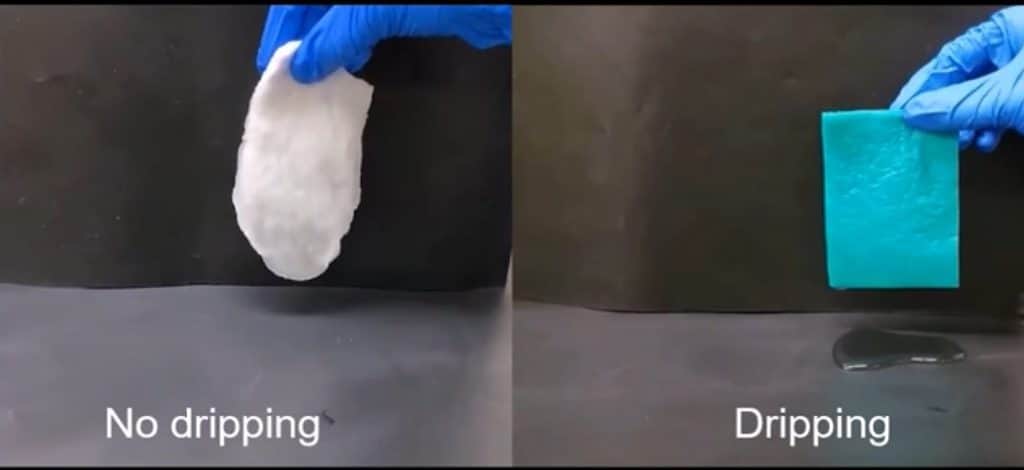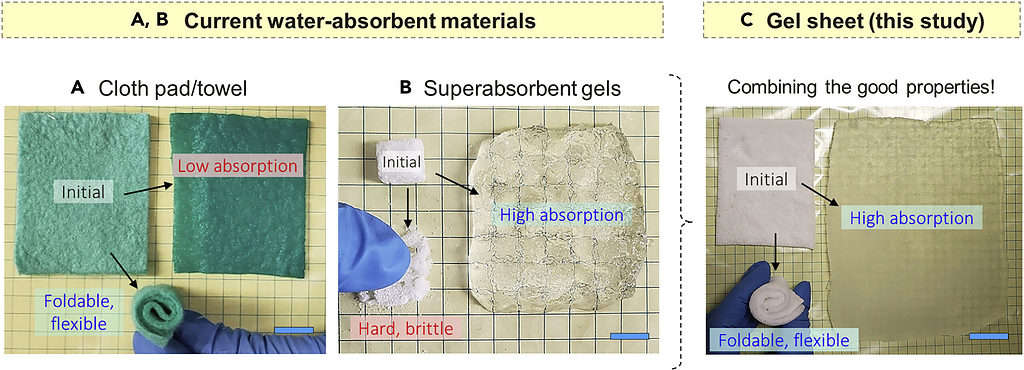We’ve all been there. We spill something in the kitchen and rush to grab paper towels or a cloth to clean up the mess. But oftentimes, you need another one; and another. While they will get the job done, they don’t really absorb as much as we would like. It’s no big problem, but it’s pretty annoying, and not exactly sustainable. But there could be a way around it. Scientists have come up with an alternative that actually takes on much more liquid than a towel or cloth.

For the most part, wiping has remained unchanged for centuries and centuries. The materials we use to wipe, however, have changed, and they could soon change again.
A team of engineers from the University of Maryland created a flexible hydrogel sheet that could one day become the kitchen towel of the future. In their recent paper, they describe the material’s unique properties – including its absorbing potential. It’s a proof-of-concept study but they hope the hydrogel sheet could eventually be sold.
The best of both worlds
Hydrogels are a group of polymer materials that can absorb large amounts of liquids and retain them once wet. This is because of their chemical composition: individual units that swell up without losing structure. The biomedical field started using them in the 1960s to keep contact lenses moist. They are currently used mostly in diapers.
However, hydrogels tend to deteriorate after redrying, making them inefficient and costly for everyday use. “We reimagined what a hydrogel can look like,” corresponding author Srinivasa Raghavan of the University of Maryland said in a statement. “What we’ve done is combine the desired properties of a paper towel and a hydrogel.”
To make their sheets, the researchers mixed acetic acid, acrylic acid, and acrylamide in a bag to produce a fizzy reaction. The mixture released CO2 bubbles within the gel, creating a porous and foam-like material. Next, the bag was crammed between glass slabs to form a sheet and exposed to UV light, setting the liquid around the bubbles.

Compared to a cloth or paper towel, a gel sheet the same size can take in more than three times the amount of liquid than others. When placed over 25ml of spilled water, the gel sheet swelled and soaked up in 20 seconds, holding the water without dripping. The cloth and the pad absorbed 60% of the water, leaving drips behind.
The gel sheet also did very well in tests with thick liquids, such as blood and syrup. It absorbed 40 milliliters of blood in just 60 seconds, while gauze soaked up only 55% of the blood. The sheet also holds the thick liquid very well, while the gauze trickles. Compared to sponges and pads, the sheet absorbed over two times more blood.
Of course, the biggest obstacle in the way of commercializing this product is cost — if you can make it cheap and durable enough, people will buy it; but if it’s too expensive, it doesn’t matter how well it works (at least for everyday use). Researchers are working on lowering the cost, but they say it’s already pretty cheap because the hydrogel is made from inexpensive, accessible materials.
The researchers are also working to optimize their gel sheet even further, increasing absorbency, strengthening the material, making the sheets reusable, They are also considering developing gel sheets that can absorb oil spills.
“In principle, the gel sheets could be a superior form of paper towels,” Raghavan said in a statement. He sees the gel sheets being used in kitchens, laboratories and hospitals, among other places. “I’m always interested in taking our inventions further than just publishing a paper. It would be wonderful to take it to actual practical use.”
The study was published in the journal Matter.






